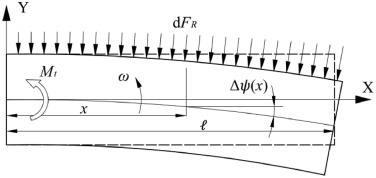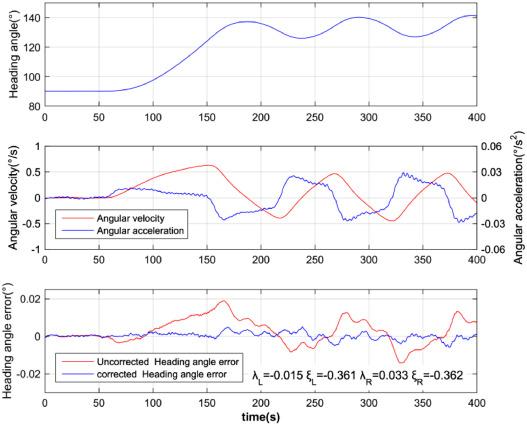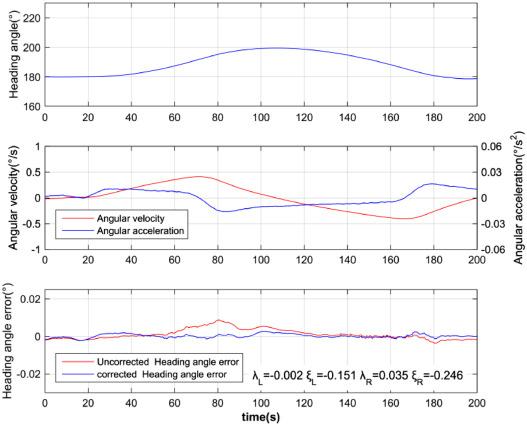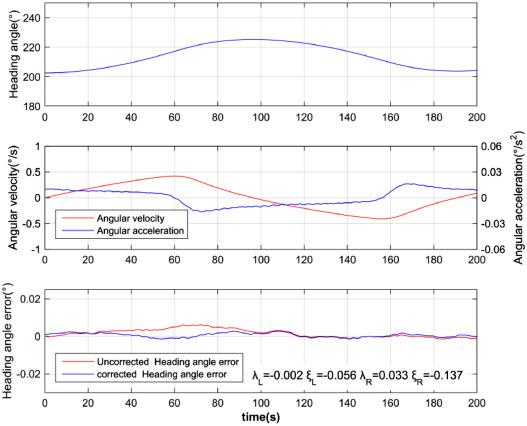In the research of inertial measurement matching method, Russian scholars put forward the method of measuring hull deformation using two sets of three-axis laser gyro components at the end of the 1980s. In which, the angular velocity error was taken as the observation measurement, and the deformation angle of the ship was estimated by Kalman filter to eliminate the influence of ship deformation [
7,
8]. Domestic scholars have also studied the prediction technology of installing multiple inertial measurement units (IMUs) on a real ship to build a distributed local reference and obtaining the hull deck deformation angle by Kalman filter [
9]. This technique either estimates the deck deformation where IMU is not installed in real time [
10] by estimating the misalignment angle of the deformation by inertial measurement and parameter matching algorithm [
11], [
12], [
13], [
14] where the dynamic flexural deformation of the hull in the wind and waves is taken as a random process stimulated by random disturbance, or obtains the dynamic deformation angle of the hull by using probability and mathematical statistics methods [
15]. This method of installing an inertial measurement system on a real ship to build a distributed local reference has certain practicability. However, the method has the disadvantages of significant installation and construction workload on board, high cost of equipment procurement, and large workload of use and maintenance in practical application. In addition, in this research, the dynamic flexural deformation of the hull is usually modeled as a second-order Markov random process stimulated by white noise. It is inconsistent with the actual situation to take the deterministic dynamic deformation of a turning ship as a random variable under the random disturbance, and does not reveal the objective law between the hull deformation and ship motion. As a result, it is difficult to guarantee the accuracy of real-time flexural deformation estimation.






